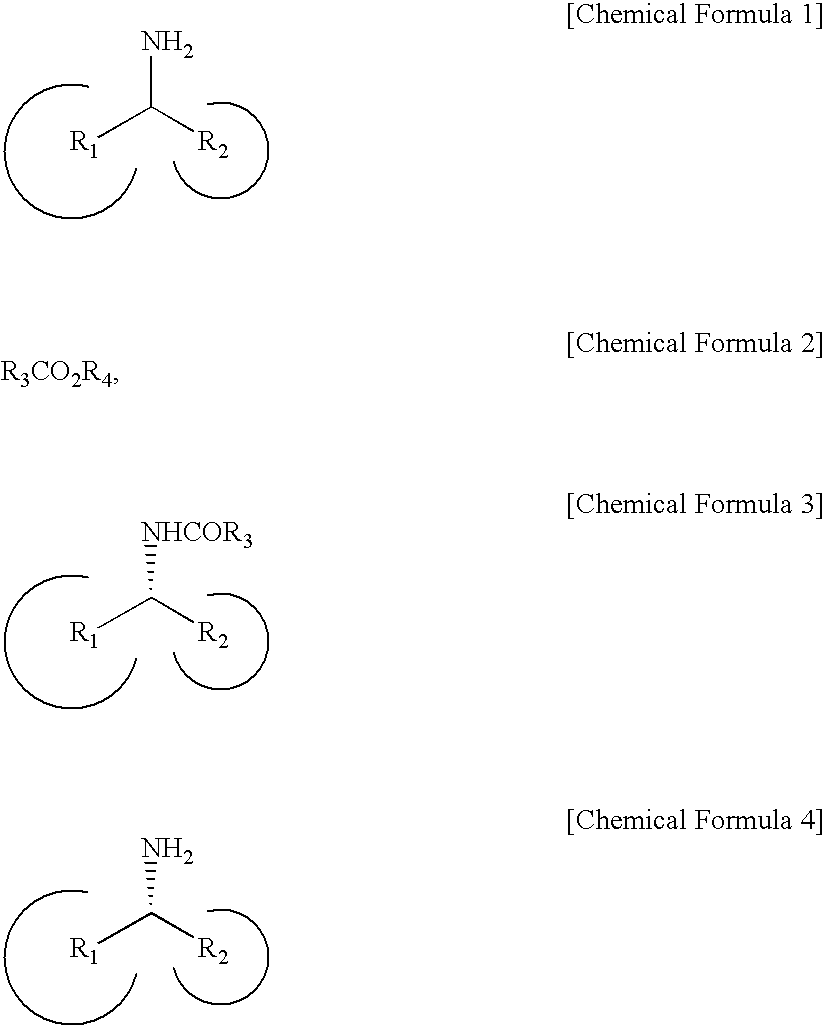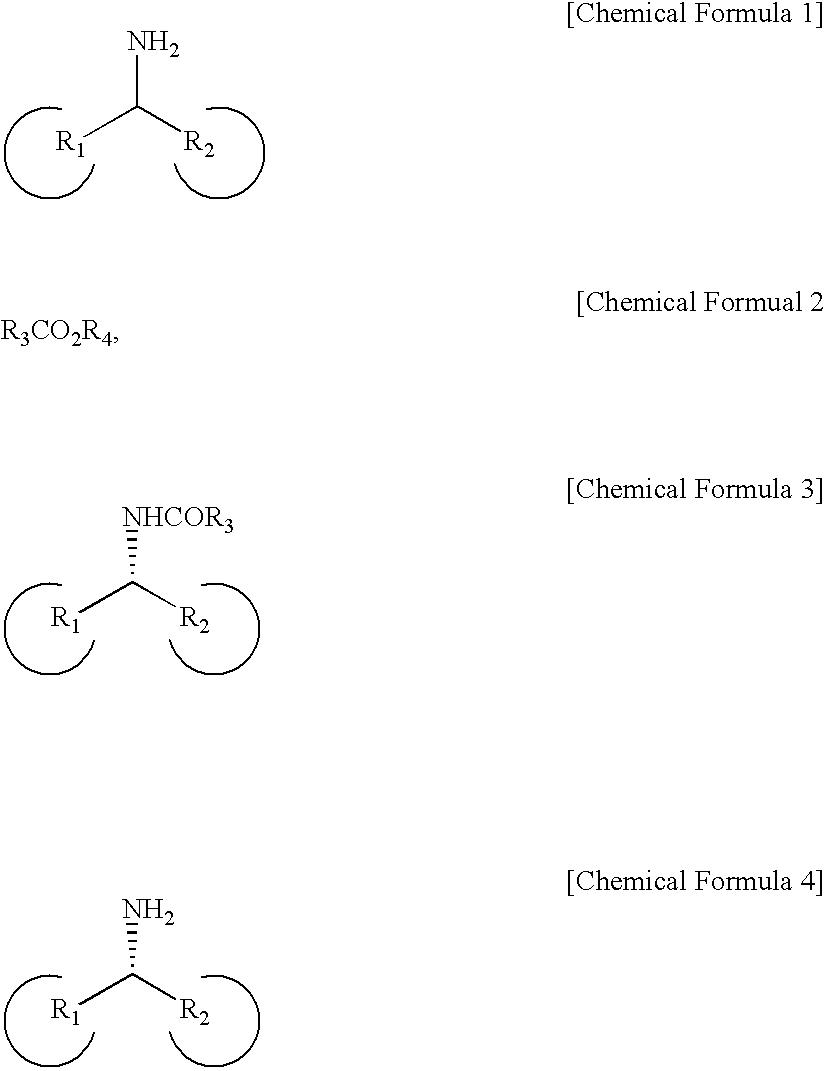Method for Preparing Optically Active Amines
a technology of optical active amines and chiral amines, which is applied in the preparation of amino compounds, organic chemistry, carboxylic acid amides, etc., can solve the problems of difficulty in reusing a used catalyst, low synthesis yield, etc., and achieves high yield and purity, easy preparation of optically active chiral amines, and short time
- Summary
- Abstract
- Description
- Claims
- Application Information
AI Technical Summary
Benefits of technology
Problems solved by technology
Method used
Image
Examples
example 1
[0087]A mixture was prepared by mixing 97 mg of α-methylbenzylamine, 99 mg of Pd / AlO(OH), 96 mg of Novozym-435 (candida antarctica lipase), 211 mg of ethyl acetate, and 560 mg of a molecular sieve 4 Å for promoting filtration of a target product. Then, 8 mL of toluene was added to the mixture in a schlenk flask. The resulting mixture was agitated for reaction at 70° C. for 3 days.
[0088]When the reaction was complete, a glass-filter was used to obtain a metal catalyst and a biocatalyst filtrate. The filtrate was condensed, and then, column chromatography was performed thereto to separate a product by using a mixture including silica gel and ethylacetate / hexane in a volume ratio of 1:1.
[0089]The acquired product is shown in the following Table 1. Its optical purity was measured by using high performance liquid chromatography equipped with a chiral column. The product, (R)-amide, had a yield of 92% and optical purity of 98% ee (enantiomeric excess).
example 8
[0090]A product was gained according to the same method as in Example 1, except for using 0.8 mmole of amine as a substrate instead of α-methylbenzylamine, as shown in the following Table 1.
[0091]Table 1 shows isolation yield and optical purity of chiral amines according to Examples 1to 8.
TABLE 1IsolationOpticalExampleSubstrateProductyield (%)purity (%)1929829197393984959859098688997869789498
example 9
[0092]A mixture was prepared by mixing 36 mg of α-methylbenzylamine, 36 mg of Pd / AlO(OH), 4.5 mg of Novozym-435, and 72 mg of ethyl methoxyacetate, and then, 3 mL of toluene was added thereto in a schlenk flask. The resulting mixture was agitated for reaction at 70° C. for 3 days.
[0093]When the reaction was complete, a glass-filter was used to obtain a catalyst filtrate. The filtrate was concentrated, and then, column chromatography was performed to separate a product by using a mixture including silica gel and ethylacetate / hexane in a volume ratio of 1:1. The product is shown in the following Table 2.
[0094]Its optical purity was measured by using high performance liquid chromatography equipped with a chiral column. The produced (R)-amide had a yield of 98% and optical purity of 99% ee.
PUM
| Property | Measurement | Unit |
|---|---|---|
| temperature | aaaaa | aaaaa |
| temperature | aaaaa | aaaaa |
| temperature | aaaaa | aaaaa |
Abstract
Description
Claims
Application Information
 Login to View More
Login to View More - R&D
- Intellectual Property
- Life Sciences
- Materials
- Tech Scout
- Unparalleled Data Quality
- Higher Quality Content
- 60% Fewer Hallucinations
Browse by: Latest US Patents, China's latest patents, Technical Efficacy Thesaurus, Application Domain, Technology Topic, Popular Technical Reports.
© 2025 PatSnap. All rights reserved.Legal|Privacy policy|Modern Slavery Act Transparency Statement|Sitemap|About US| Contact US: help@patsnap.com



